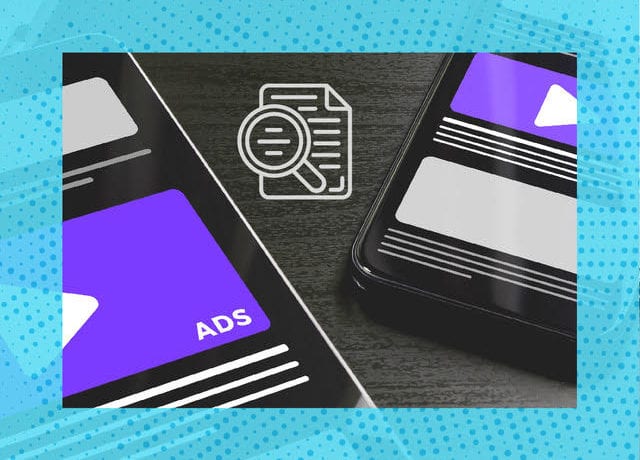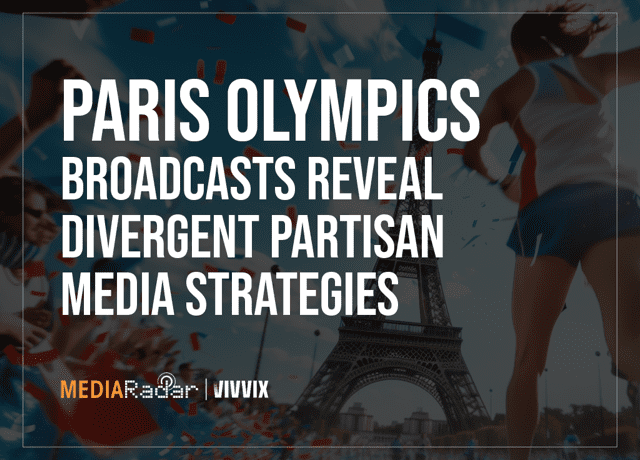Given how rapidly programmatic advertising is expanding in terms of both media and capabilities—programmatic ad spending is expected to increase by more than 73% between 2021 and 2026—it can be difficult to keep up with the technology and new terms. This growth comes despite an expectation that ad spending will slow in 2023 amid rising inflation and economic uncertainty.
Demand side platforms (DSPs) get confused with data management platforms (DMPs), programmatic deals get mixed up, and waterfalling is unique from any other form of advertising.
With the pandemic and new legislation, programmatic continues to evolve.
To break down the programmatic process and make it as digestible as possible, we have compiled a list of definitions to take with you moving forward.
Here is our brief glossary for programmatic advertising, explained:

1. Ad Exchange
An ad exchange is a digital marketplace where publishers and brands can buy and sell ad inventory. Mostly used for video, display, and mobile placements, ad exchanges hold real-time auctions, collecting bids from brands that want a specified ad placement.
Whether in the traditional process of waterfalling or header bidding, ad exchanges make filling ad inventory more efficient and easier for buyers and sellers.
A few of the most popular ad exchanges include Google Ad Exchange, AppNexus, Rubicon Project, and Verizon Media.
2. Ad Inventory
Ad inventory is the available ad space a publisher can sell to advertisers.
In a general sense, inventory is a stock of goods a business holds to eventually be sold.
Ad inventory is the same, simply less tangible than what most of us think of when considering inventory.
Whereas an auto parts store stocks brake pads, rotors, oil, and headlights as inventory, publishers stock display, mobile, and video ad space as inventory.
3. Ad Network
An ad network is a company that connects advertisers to websites that host advertisements. It serves as an aggregation of ad supply and demand.
Essentially, ad networks help advertisers buy space across publishers. Online ad networks developed in the ‘90s but have developed since. Snapchat, for example, created its own ad network.
4. Ad Server
An ad server is a digital technology that serves advertisements to website visitors.
In the programmatic ad buying process, the ad server works as a mediator between ad exchanges holding auctions for advertisers and a web page with open ad placement.
The server communicates with exchanges to find a brand, then serves that brand’s advertisement on the given web page.
5. Ad Space
Ad space can be considered the spots on a webpage where an advertisement can be placed.
On a web page, ad space can typically be found in the header/footer areas, in the sidebar, within the content itself, and so on.
Publishers often host many web pages, thus allowing them to offer a great deal of ad space. All of that ad space combined is what makes up their ad inventory.
6. Attribution
With attribution, advertisers can see where their incoming traffic is coming from. For brands advertising with PPC, social media, display ads on publications and more, attribution becomes important for figuring out which channels have the biggest impact.
Selling an ad to a brand may just be part of their larger digital campaign — and they need a way to determine the touchpoints of the campaign and the impact that each touchpoint has. This is typically achieved with tags embedded in the display ad.
7. Audience Extension
One of the most appealing elements of ad networks and demand-side platforms is the ability for brands to follow their audience from one site to another.
Audience extension and its cousin retargeting are what allow brands to offer highly targeted, personalized ads to their audience not only based on demographics but also browsing behavior.
It also allows advertisers to retarget consumers when they bounce from site to site.
8. A/B Testing
Since programmatic ads are built digitally, brands have the ability to test the efficacy not only of an entire campaign or advertising channel but also of each creative that they put to use.
A/B testing is an automated comparison of different ad versions to determine which performs best. In many cases, the higher-performing ad will be automatically prioritized.
9. Behavioral Targeting
This refers to sending advertisements to consumers or buyers based on their behavior across the web (i.e., pages visited, content viewed, searches, and purchases). As cookies are phased out, this type of targeting will likely rely on an open-source ad ID framework.
10. Blacklisting or Blocklisting
Blackslists allow brands to block advertisements from being placed near certain keywords, topics or domains. This helps ensure brand safety—though publishers, especially reputable news sources, say it’s detrimental to journalism.
Vice adopted the term ‘blocklisting’ because “blacklisting” and “whitelisting” carries racial undertones.
11. CCPA
The California Consumer Privacy Act (CCPA) was enacted in 2018 but took effect on January 1, 2020. The law is designed to limit the way publishers collect and use consumer data, giving users the ability to opt out of data collection. The vague wording of the CCPA means publishers have addressed compliance in disparate ways, and AdWeek reports that the effect of the law remains to be seen.
12. Container
Also referred to as a “wrapper,” a header bidding container is a technology used to make communication with header bidding partners easier and make the header bidding process less disruptive for websites.
The container minimizes the code needed in the process of header bidding.
Instead of individual lines of code needing to be added for each demand source, the container allows for a single line of code to be added.
As demand sources come and go, only the container needs to be updated, not the entire webpage. It is a way to make sure that website load times are not affected by the automated process of header bidding.
13. Contextual Targeting
Instead of (or in addition to) targeting ads based on browsing behavior or demographics, contextual advertising automatically places different ads on pages based on the page’s content.
A travel publication, for example, may offer the ability to automatically display ad creatives related to a specific destination as a consumer is viewing the page. The text- or image-based ad is typically dependent on the keyword related to the page.
14. CPM (Cost Per Thousand Impressions)
CPM is a way to measure the cost-effectiveness of ad space. It is typically the cost accrued by an advertiser per 1000 viewer impressions of an online advertisement.
CPM represents what advertisers are willing to pay for certain ad space. For publishers, higher CPMs represent more valuable ad space.
Cost Per Click (CPM), in comparison, is typically used for PPC search ads, but it can still be a viable pricing model for programmatic display ads as well.
15. CPRA
The California Privacy Rights Act (CPRA) was passed in November 2020. Strengthening the original CCPA “allows consumers to prevent businesses from sharing personal information, correct inaccurate personal information and limit businesses’ use of sensitive personal information including precise geolocation, race, ethnicity and health information.”
Instead of placing the responsibility on consumers to opt out, businesses are now held more responsible by minimizing data collection and protecting data security. Businesses will also be held more accountable to regulators with more required risk and cybersecurity audits.
16. First-, Second- and Third-Party Data
First-party data is offered by publications as information gathered on their viewers or customers first-hand — through a CRM, website analytics, and cookies.
Second-party data is essentially someone else’s first-party data. The key difference of this type of data is that it does not come directly from the publication. Second-party data, on the other hand, is purchased directly from the company that owns it.
Third-party data is aggregated from several sources. Unlike second-party data, it is not bought directly from a company selling its own data. Instead, third-party data comes from huge data aggregators that purchase first-party data from many publishers and other data owners.
Third-party data is, of course, the data type at the heart of Google’s announcement to sunset third-party cookies in 2024.
17. Data Management Platform
A DMP is what keeps programmatic advertising offerings and campaigns organized. Brands and publishers alike can use the platform to, well, manage data.
Brands typically use DMPs to track campaigns with first-party data and integrate it with third-party data so that onsite and audience extension activities are coordinated.
Publishers typically use DMPs to organize in-house data about users that can then be packaged into audience segments for brands.
18. Demand-Side Platform
A demand-side platform is a technology that automates media buying for advertisers.
DSPs enable ad buyers to communicate with ad exchanges, allowing them to automatically place bids on the ad space they desire. It is a web-based manager for advertisers to find available ad space.
Amazon, for example, has its own DSP. Our post on the unveiling of Amazon Advertising goes into more detail about the uses of a DSP and how it interacts with other facets of the programmatic landscape. Other popular DSPs include DV360, MediaMath, and The Trade Desk.
19. GDPR
The General Data Protection Regulation (GDPR) is an EU law focused on consumer privacy and personal data in and out of Europe. At its core, GDPR sets standards for protecting consumer data, and companies share data with other publishers. The law also requires consent for collecting cookies, which is why we started seeing “Accept Cookies” banners pop up in 2018.
20. Header Bidding
Header bidding refers to a specific process of how programmatic advertising is executed.
It is one of the latest advancements in programmatic, making the process even more efficient by considering multiple bids simultaneously and considering pre-existing direct buys alongside programmatic buys.
By letting multiple advertisers bid on placements at the same time, publishers can truly maximize the value of their ad inventory while letting less inventory go to waste.
21. Native Programmatic
Programmatic delivers ads that matched the look, feel, and function of the media format in which they were placed. Native programmatic advertising offers the benefits of both native and programmatic. Native advertising is a non-interruptive format for the user experience. Programmatic takes place when the ad is purchased and delivered using real-time bidding via a DSP.
22. Price Floor
In programmatic advertising, the price floor is the minimum price set for any ad placement.
This is a way for publishers to non-directly negotiate with advertisers. Publishers ensure a minimum return on purchased ad space by setting a price floor. No ad will be placed programmatically unless it meets or exceeds the price floor.
23. Programmatic Direct
Programmatic direct is a way for ad buyers and sellers to automate direct ad buys.
In programmatic direct, there is no bidding for ad placements. There are fixed pieces of inventory being sold for fixed prices. But each deal is executed programmatically.
It is essentially the middle ground between direct, human-based ad buying and the completely automated processes of waterfalling and header bidding.
24. Programmatic Podcast Ads
Programmatic podcast ads make ads personalized for specific audiences—based on location, weather, and demographics. A few specialized companies are leading the charge in developing programmatic advertising for podcasts, namely Audry. This type of advertising is still in its infancy but already demonstrates many advantages, including scalability, better attribution data, and improved audience relevance.
That said, advertisers remain hesitant about programmatic podcast ads due to the premium they still place on host-read ads and their desire to vet the content before the ad goes live.
25. Programmatic Video
Programmatic video refers to video advertisements placed programmatically. Advertisers can choose from a variety of options, including in-stream video, pre-roll videos, mid-roll videos, post-roll videos, out-stream video, and in-display videos.
26. Responsive Voice Ads
Adding an interactive element to ads served over streaming services, responsive voice ads let advertisers engage with consumers in a new way. For example, brands can ask a ‘yes’ or ‘no’ question offering more information if prompted.
Pandora launched a test of their interactive audio ads late in 2019, with brands like Wendy’s asking if consumers are hungry. So far, other platforms have hesitated to embrace responsive voice ads due to consumer sensitivity concerns.
27. SameSite Tag
In 2024, Google Chrome will block third-party cookies automatically. But developers have the option of using a SameSite tag to allow limited cookie sharing in their network. Check out our blog post on Google’s privacy updates for more info. Google also introduced the concept of a Privacy Sandbox for ad tech last year.
28. Streaming Ad Insertion
Audio ads for music and podcast platforms are nothing new. But now Spotify is expanding, bridging podcast advertising with ad tech with its Streaming Ad Insertion technology. The development brings Spotify a step closer to becoming a podcast ad network.
According to the company, Spotify Podcast Ads “offer the intimacy and quality of traditional podcast ads with the precision and transparency of modern-day digital marketing.”
29. Supply Path Optimization
Logistics has Supply Chain Optimization, and ad tech has Supply Path Optimization (SPO). With SPO, advertisers can make their advertising dollars go further by getting better insight into how SSPs use their fees, which SSPs provide the best value, and where they can cut down on overlap.
As the SSP PubMatic puts it, SPO is “really just the process of reducing the number of intermediaries until each is adding value.”
30. Supply-Side Platform (SSP)
A supply-side platform is very similar to a demand-side platform, except instead of being on the buyer’s side of the transaction, it is on the seller’s side. DSPs would aid advertisers, while SSPs would aid publishers.
An SSP is a way for publishers to automate the filling of their ad inventory. The SSP interacts with ad servers to find advertisers; it is a publisher’s automated inventory manager.
31. Unified ID 2.0
Google is getting rid of third-party cookies from Chrome in 2024, and Apple made its Identifier For Advertisers (IDFA) optional for consumers with iOS 14.
As the advertising industry prepares for an internet without cookies, leaders like The Trade Desk, IAB, LiveRamp, Criteo, and Nielsen partnered to create Unified ID 2.0, a new way of approaching identity online.
This open-sourced ID framework will use encrypted emails to identify users. It will also be independently governed and allow consumers to opt-in or out, giving them an easy way to control their privacy preferences.
32. Waterfalling
Waterfalling is the name for the traditional process of how programmatic advertising is carried out.
In this process, when a web page is loaded, a request gets sent to an ad server, and that server reaches out to ad exchanges to discover bids made for a single ad placement.
Bids are considered one at a time, sequentially, thus not always gaining the highest possible return for publishers. This process was a breakthrough initially but left the door open for further advancements – header bidding, the prime example.
Programmatic Advertising Explained: Build, Test, Tweak
Media buyers with a good portion of their ad spend dedicated to programmatic advertising expect the a la carte ability to build out their creatives as they see fit, test the results of display ads in real-time, and make tweaks quickly and easily.
“It takes more than just money to make a success of programmatic advertising and relies on brands optimizing their campaigns to get the most for their money,” writes Emily Atkinson at Ve, a digital ad agency.
While this list of programmatic advertising terms does not cover the entirety of the advertising avenue, it will definitely help further your understanding of the process.
For more insights, sign up for MediaRadar’s blog here.


